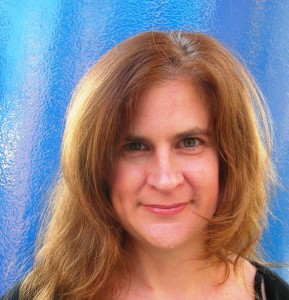More connections, shared ideas and fresh energy: three big benefits of the VCAM conference, which Info Guide (and Volunteer Executive member) Michelle Abrams brought back to the AGO with her.
Some quick background! VCAM stands for Volunteer Committees of Art Museums. It was founded right here in 1952 by some AGO volunteers who wanted to create a forum for contact with similar volunteers throughout North America. VCAM meets every three years, most recently October 9-11 in Cleveland, Ohio with the Cleveland Museum of Art as host. (Next host: Virginia Museum of Fine Arts, Richmond VA.)
“The theme this year was ‘Valuing the Volunteer,’” says Michelle. This is of interest to all of us, but perhaps especially to Michelle – which also made her a good representative for us at the conference. As well as being one of VCAM’s Regional Directors, she is also a member of the AGO Volunteer Executive committee creating our new Volunteer Strategic Plan and head of the committee running Volunteers Connect (in many ways a local equivalent of VCAM).
“It’s a big theme, and we discussed it from many different angles,” she explains. “For example, volunteer recruitment and retention, training programs, strategic planning, and the role of everything from social media to statistics in helping us understand, engage and develop our volunteers.”
After days of conversation with colleagues, Michelle came away from VCAM feeling that our approach at the AGO is on the right track. In fact, in some areas we’re among the leaders:
- Recruiting new volunteers – “We’re very good at attracting not just more volunteers, but the kind of diversity of ages and backgrounds that we now want.”
- Strategic planning – “I think we stand out in terms of the thought and care we are taking with creating our Volunteer Strategic Plan, including the input we sought from our whole volunteer community and will build into the final document.”
- Engagement, feedback – “We’re already doing a lot of the ideas that were raised in this area, things like a blog for our volunteers that invites comment, awards and parties and discounts to recognize volunteers’ contribution, and online Meetup groups so volunteers can get together outside the AGO.”
- Use of statistics – “Everyone was talking about that, about how important it now is to give our institutions hard numbers so they will see the size of the volunteer contribution, and value us accordingly. It’s the way to build institutional support for the role of volunteers, and here at the AGO, we’re taking big steps in that direction.”
But there are still challenges, she points out. “Volunteer retention, meaningful placements for volunteers, leadership development — we’re dealing with those things, just like everyone else.”
Get-togethers like VCAM help everyone meet the challenges. “It’s a chance to meet volunteers from other organizations who are just as passionate about the work as we are. It’s very energizing.”
